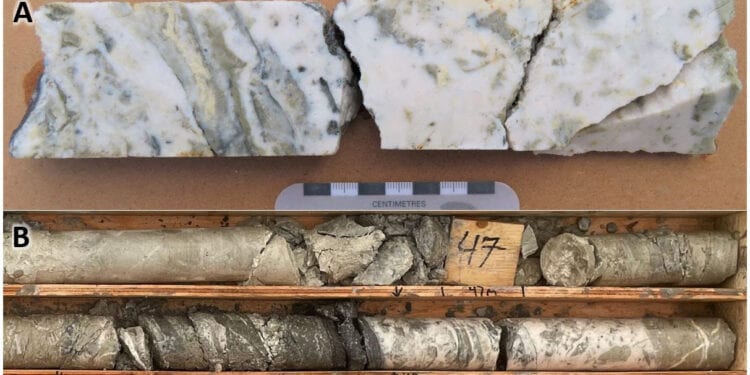Initial Drill Programme Intersects Mineralised Structure
Snowline Gold Corp. (CSE:SGD) has achieved its initial objective with Phase I drilling at the Jupiter zone within the Rogue Project in the Yukon with the discovering a mineralised structural zone.
The campaign is nearing completion with the mineralised structural zone thought to be partially responsible for gold-bearing quartz float boulders that grade up to 25.2 g/t Au previously found on the surface.
Approximately 1,560m of drill core have been recovered from the Callisto target, with all 9 holes drilled to date intersecting a mineralised structure down to depths of 100 metres, and along a 230-metre-long structural trend. This trend, which follows a regional-scale feature, is open for further drill targeting in all directions. Full assay results from these mineralised intervals are expected by early to mid-August.
“The preliminary drilling results from Jupiter are encouraging” said Nikolas Matysek, CEO, and director of Snowline. “
“Discovering mineralised intervals in multiple holes across hundreds of metres is a sign of the significant potential at Jupiter. We are pleased that Snowline’s first drill programme has identified a potential source for the mineralised float found at surface and look forward to complete assay results.”
The ongoing Phase I diamond drill programme initiated at the Jupiter zone tested a three-kilometre long by up to 500-metre-wide area of anomalous gold-in-soil values accompanied by a prominent gold-bearing quartz boulder float train.
All nine drill holes have intersected a shallow north-easterly-dipping structural zone.
This zone comprises localised fault gauge and quartz, deformation and brecciation of sedimentary strata, and clay alteration of surrounding sedimentary units. The thickness of the mineralised zone in drill core, defined by the extent of arsenopyrite, ranges from 0.2 metres (Hole J-21-001; 50 m downhole) to 21.65m (Hole J-21-009; 18.5 m to 40.15 m downhole). True widths are currently unknown, though near 90-degree intersection angles with drill core suggest that true widths represent a substantial portion (75-100%) of widths intersected in drill core.
While encouraged by Phase I drill results, which indicate the in-situ presence of an extensive epizonal orogenic gold system, the company awaits assay results to better assess their significance.
Phase I drilling at Jupiter has been complemented by comprehensive surface work, including high-resolution drone surveying, local and regional geological mapping, infill soil sampling and trenching that will help to guide a second phase of drilling, if warranted by Phase I results. Drilling has now moved to the Io target, some 650 metres southeast along strike of the same structural trend.
For further information please visit: https://snowlinegold.com/












